What is Kake Soba?
Kake soba (かけそば) is a buckwheat noodle dish made by pouring hot dashi-based soba soup over boiled soba noodles. At soba restaurants, the word “kake” alone can refer to kake soba.
When udon noodles are used instead of soba noodles, it is called kake udon, but in Osaka and other parts of the Kansai region, it is also sometimes called su-udon.
Kake soba is often eaten on New Year’s Eve in Japan where it is known as “Toshikoshi Soba” (年越しそば) or New Year’s crossing soba. This tradition is believed to bring longevity, prosperity, and good fortune over the coming year. Since soba noodles are made from buckwheat, a plant known for its hardy nature, soba also symbolizes resiliance and good health.
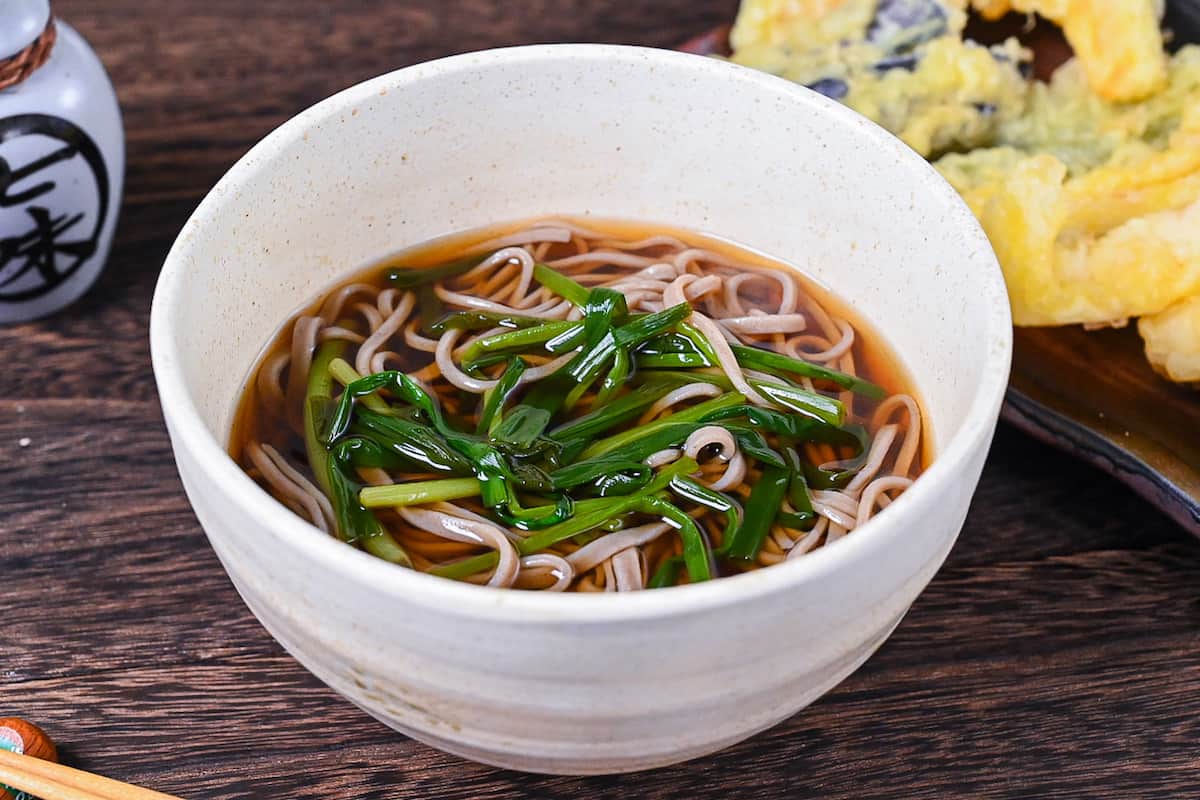

How I Developed This Recipe
Making your own soba for New Year’s Eve is a great tradition, but it can take a while, especially if you’re hosting a party with friends and family.
I know how important it is to get that homemade quality, but we also need to be able to get things done quickly. So I’ve developed a soba recipe that can be prepared in just 10 minutes.
This recipe lets you enjoy the taste of homemade soba without spending too much time in the kitchen, so you can spend more time celebrating with your loved ones. It’s the ideal choice for a festive yet simple New Year’s Eve meal.
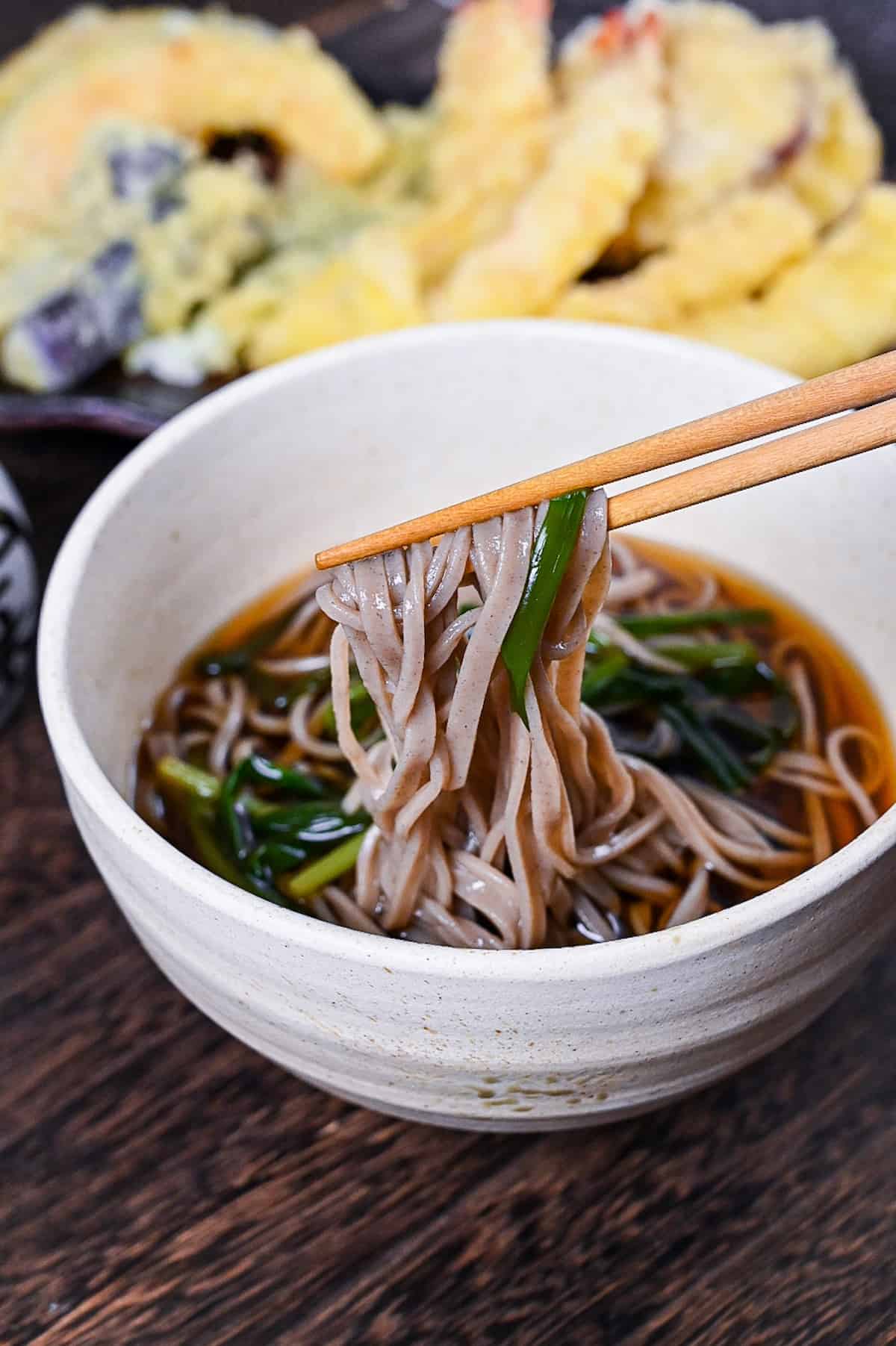
Ingredients & Substitution Ideas
- Soba Noodles: These Japanese buckwheat noodles are a real treat! They have a delicious nutty flavor and a distinctive brownish-gray color. They’re about the same thickness as spaghetti, and you can get them dried or frozen. If you’re feeling adventurous, I’ve shared a homemade soba recipe on the blog, though it’s quite the challenge!
- Dashi Broth: Vital for authentic flavor and umami in soba and udon soups. Options include simple awase dashi (with dried kelp and bonito flakes) or vegan awase dashi (with dried kelp and shiitake mushrooms). These take about 30 minutes, but dashi packets or granules are convenient alternatives.
- Soy Sauce: Dark soy sauce (koikuchi shoyu) adds a rich, full flavor, while light soy sauce (usukuchi shoyu) gives a bright, salty kick. Together, they create a lovely balance in our broth. If you only have dark soy sauce, just add a little salt to taste.
- Sake: I really recommend it, but feel free to leave it out if you want an alcohol-free version. You’ll still get a great result!
- Mirin: A sweet rice wine that contributes to the broth’s flavor. Substitute with a teaspoon of sugar (preferably light brown) for every tablespoon of mirin if needed.
- Topping Ideas: Customize your soba soup with toppings like chopped spring onions, kamaboko (Japanese fish cake), shichimi togarashi (Japanese chili powder), tenkasu (tempura bits, for “tanuki soba”), aburaage (sweet fried tofu, for “kitsune“), or duck breast (for “kamo nanban soba“).
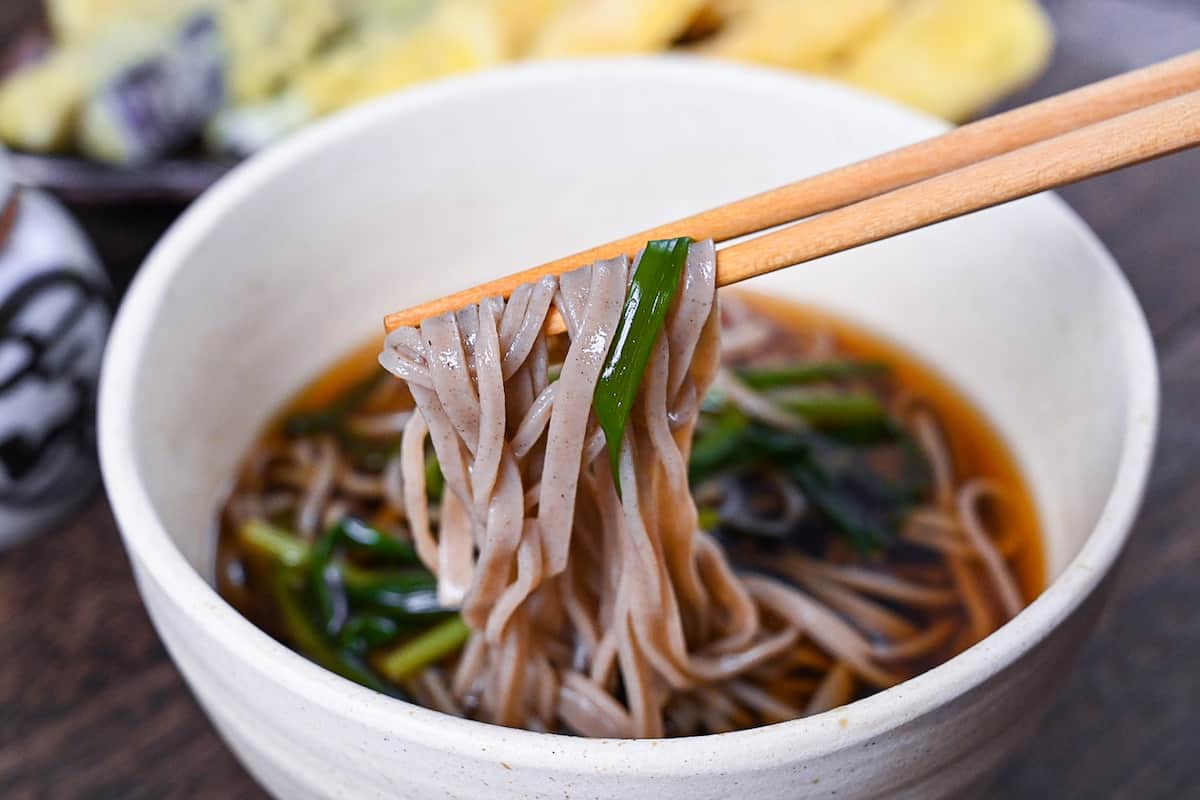
I hope you enjoy this Kake Soba recipe! If you try it out, I’d really appreciate it if you could spare a moment to let me know what you thought by giving a review and star rating in the comments below. It’s also helpful to share any adjustments you made to the recipe with our other readers. Thank you!
More Japanese Soba Recipes
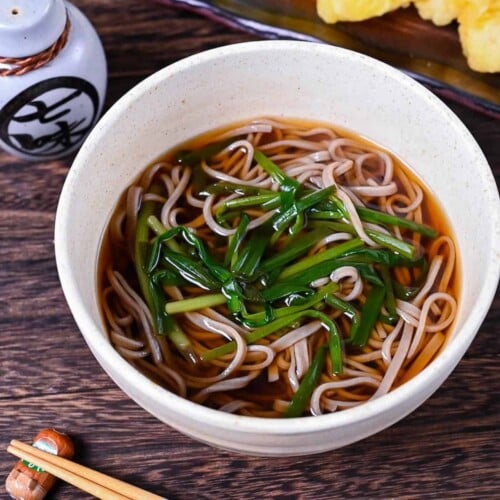
Kake Soba (New Year’s Eve Soba Noodle Soup)
Ingredients
- 2 portions soba noodles
- 500 ml dashi stock use shiitake and kombu dashi for plant-based diets
- 20 ml Japanese dark soy sauce (koikuchi shoyu)
- 20 ml Japanese light soy sauce (usukuchi shoyu)
- 50 ml mirin
- 1 tsp sake
- 30 g green onion hosonegi cut into 5cm pieces
- 2 pinches Japanese chili powder (shichimi togarashi) shichimi togarashi, to garnish
My recommended brands of ingredients and seasonings can be found in my Japanese pantry guide.
Can’t find certain Japanese ingredients? See my substitution guide here.
Instructions
- Cook 2 portions soba noodles according to the packaging.

- Add 500 ml dashi stock, 20 ml Japanese dark soy sauce (koikuchi shoyu), 20 ml Japanese light soy sauce (usukuchi shoyu), 50 ml mirin and 1 tsp sake to a separate saucepan and bring to a boil. Once boiling, lower to a simmer and add 30 g green onion. Allow to simmer for 2-3 minutes.

- Divide the cooked soba into serving bowls and pour the broth over the top. Place the cooked spring onion on top of each bowl.

- Sprinkle 2 pinches Japanese chili powder (shichimi togarashi) or your choice of additional toppings (see in post). Enjoy!

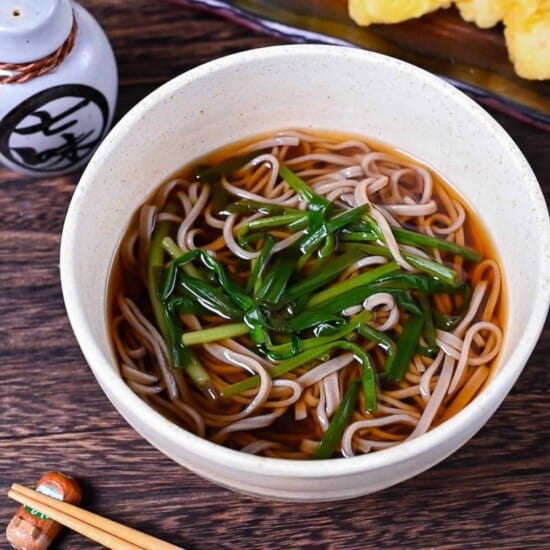


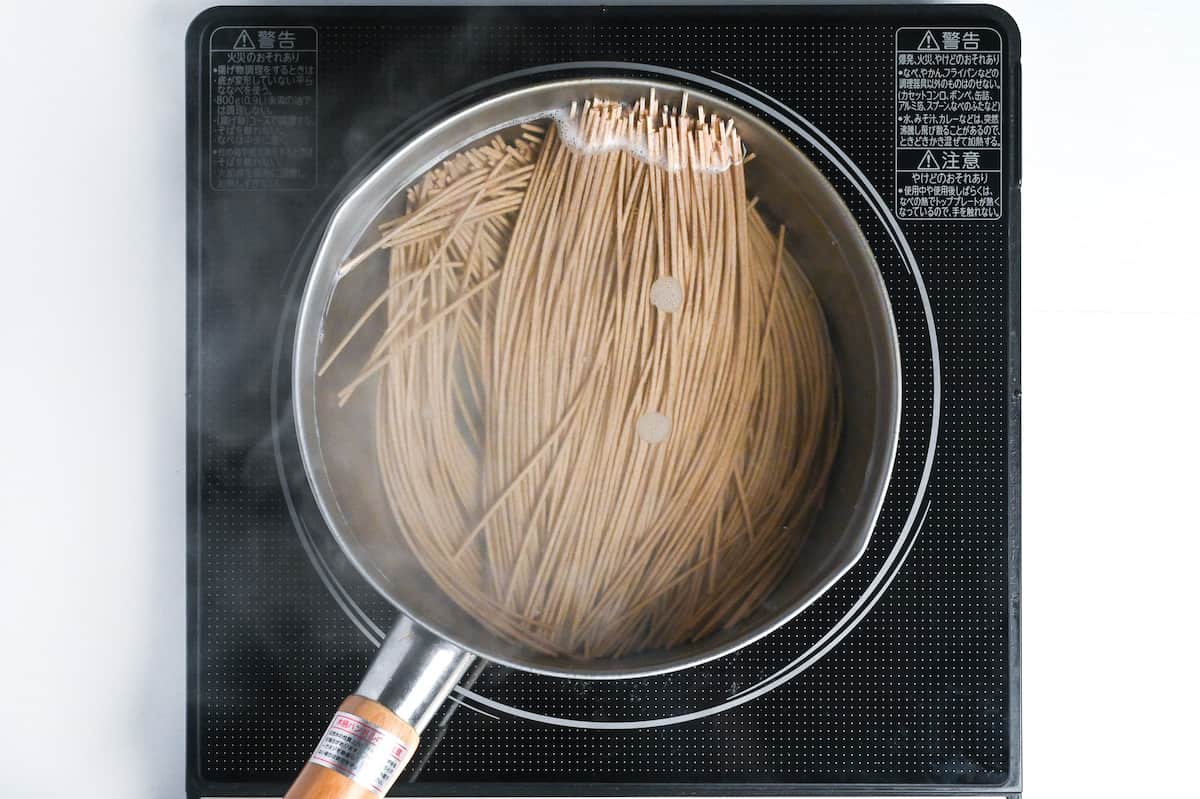
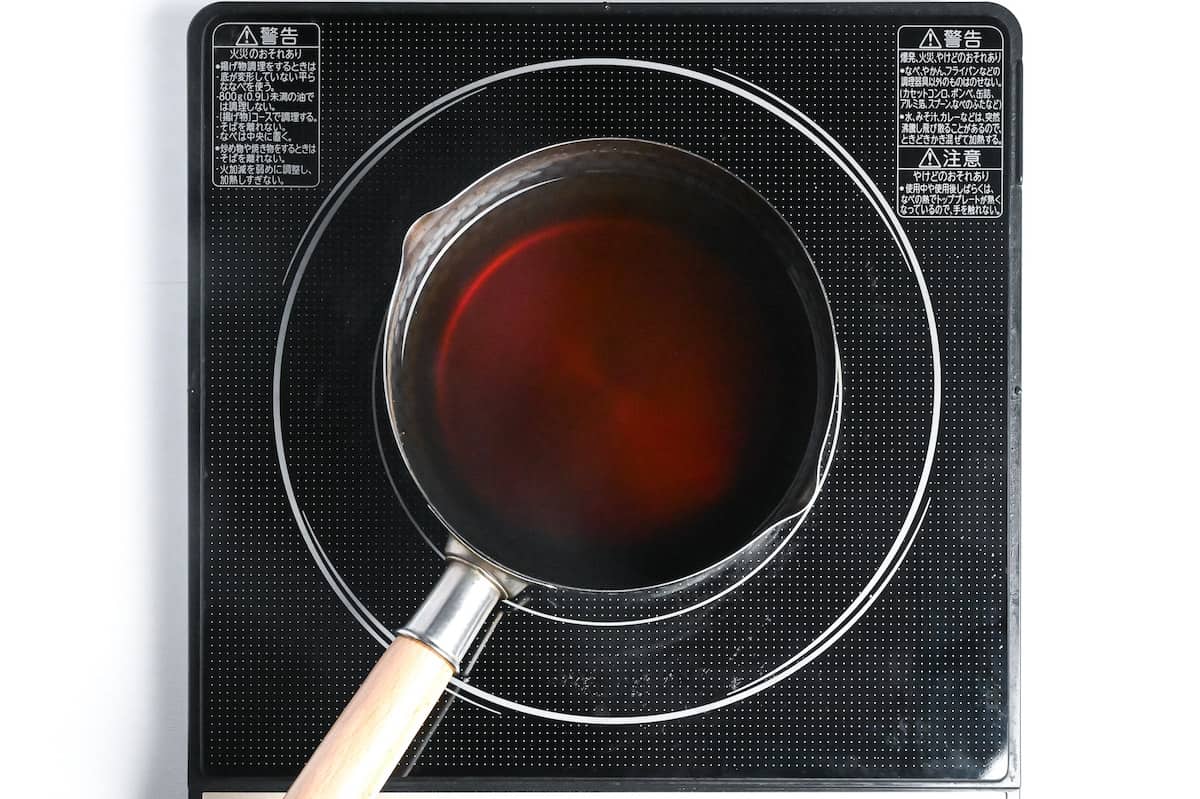
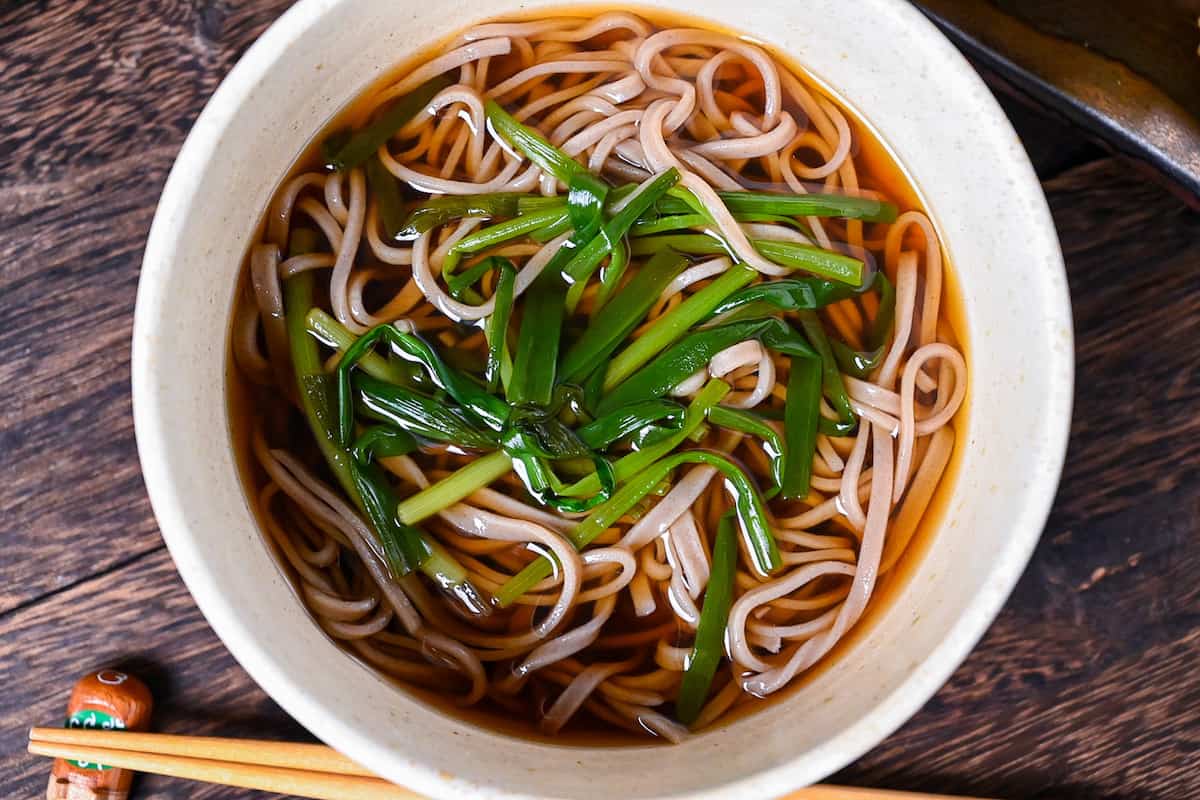
Leave a rating and a comment